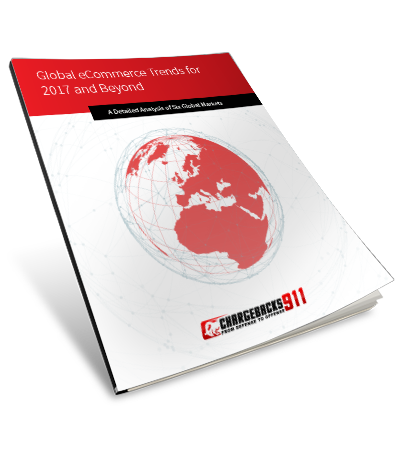Here’s the Skinny on How to Benefit From Cross-Border eCommerce
Nobody wants to limit their business to just one market. The goal of commerce is to increase profits. To do so, you need to diversify your revenue streams.
Jumping into cross-border eCommerce is an awesome way to maximize your earning potential. What is cross-border eCommerce, though, and what value does it offer?
- Cross-Border eCommerce
Cross-border eCommerce encompasses any online trade occurring between a business (retailer or brand) and a consumer located in a different country or administrative region.
[noun]/* krôs • bôr • dər • ē • käm • ərs/
Hundreds of millions of consumers around the world are turning to international sellers for items that are not available through their local market. That’s great news for cross-border retailers. This new opportunity comes with complications and concerns as well, though.
In this article, we’ll explore the current cross-border e-Commerce landscape. We’ll give some statistics that offer insight on what drives international markets, and see what you need to know about global preferences and how to navigate the cross-border space.
Recommended reading
- Analyzing Consumer Buying Behavior in 11 Different Verticals - Chargebacks911
- Top 15 Customer Returns Reasons in 2025 & How to Avoid Them
- Online Shopping vs In-Store Shopping: the Future of Retail?
- They’re Here — Cyber Week 2024 Stats & Analysis!
- Card-Not-Present Transactions: Know the Risks & Rewards
- What is a Return Customer Rate? How to Calculate Your RCR
What’s the Value of Cross-Border eCommerce?
Given the internet's rise as a main buying and selling platform, it’s become a lot easier to reach buyers in other regions of the globe. You want to make your products available to as many markets as possible, and the internet offers the answers.
These cross-border eCommerce statistics may shed some light on the opportunity here:
There are a lot of benefits to diversifying your trans-national outreach. Selling across multiple markets, through a variety of channels, can increase revenue and raise your brand’s visibility. But, having said that, there are plenty of hurdles to leap before you can take full advantage of the opportunity.
Do You Understand Cross-Border Consumers' Preferences?
Before you consider making the jump to a new market ask yourself: do I understand consumer preferences in that new market? For example, here are some notable trends in payment preferences from a few major international markets:
- France and Spain: Much like the U.S. and Great Britain, French and Spanish consumers prefer to shop online with their Visa, Mastercard, or American Express credit card.
- India: Payment cards are present in India, as it is in other Asian countries, but cash is still king. Most online transactions in India are ordered online, but paid for using cash on delivery.
- Japan: Many Japanese consumers have orders fulfilled by a store called a konbini. Consumers shop online, then take a reference number to the konbini, pay in person, then have their goods delivered to their home.
- Russia: Credit cards are not widely used in Russia. Instead, consumers prefer cash-on delivery, bank transfers, and local e-wallet options like Yandex and Qiwi.

The Essential Guide to Global eCommerce
Our new whitepaper takes a close look at eCommerce practices around the world. We carefully examined data on markets from Africa to Asia and beyond, all to assemble a thorough, predictive picture of where eCommerce is headed over the next several years.
FREE DOWNLOADThe takeaway? If you aim to sell internationally, you have to adjust your methods to accommodate regional consumer preferences. As yet, there is no other method of payment that can help merchants overcome the universality hurdle.
What to Know Before Taking on Cross-Border eCommerce
Breaking into a new market is hard. Each individual country or region has its own unique barriers to easy adoption. Before you dive in, you need to research these topics extensively:
Is it Worth it? Here’s 4 Key Questions to Ask
You need to think strategically about those challenges associated with cross-border retail. The first step is to ask the following before moving into a new market:
#1 | Who is looking to purchase my product? Who else can I attract?
The simplest way to determine who is looking to purchase from you is to analyze web traffic. The number of people who come to browse by country of origin is a straightforward and reliable method of identifying whether there is a latent demand for a product.
The traffic pattern is also important to note. If traffic remains consistent, it could be a sign of ongoing curiosity. This suggests that, by bringing the product to the market, you can attract additional customers who may not already be aware of the product.
#2 | Is demand high enough to offset added cost and complexity?
Once you identify the degree of preexisting demand and potential in the new market, you need to weigh the burdens of entering against the potential gains.
Will enough people buy to make it worthwhile to invest in new payments or service infrastructure? What about navigating the new market’s rules and regulations? If the potential benefits don’t offset these costs, then it won’t be worth it.
#3 | Can I meet the consumers’ service and shipping expectations?
One report published by DHL projects that 24% of consumers are worried about the feasibility of international returns. This might dissuade them from making a purchase. Other concerns about shipping time, cost, and availability of customer service also pose challenges for international sellers.
You should be totally transparent about these concerns. Let customers know what to expect in frank, honest terms.
There are still ways to alleviate these concerns. For instance, skeptical customers might be reassured if you co-brand with a recognized and trusted logistics partner in the customer’s country.
#4 | Can I communicate my message clearly in a different market?
Language and cultural differences can work to your advantage. They can make the product appear exotic and unique to overseas shoppers. However, these differences may just as easily be barriers that obstruct communication and service between retailer and customer.
You should conduct thorough research on whether this will be a significant issue. Ensure that your voice and message is clear from the perspective of your customers.
Having a Strategy is the Key to Cross-Border Profitability
Cross-border eCommerce offers great new retail opportunities…but only if you operate strategically. Otherwise, you risk turning a winning business move into a serious revenue drain.











